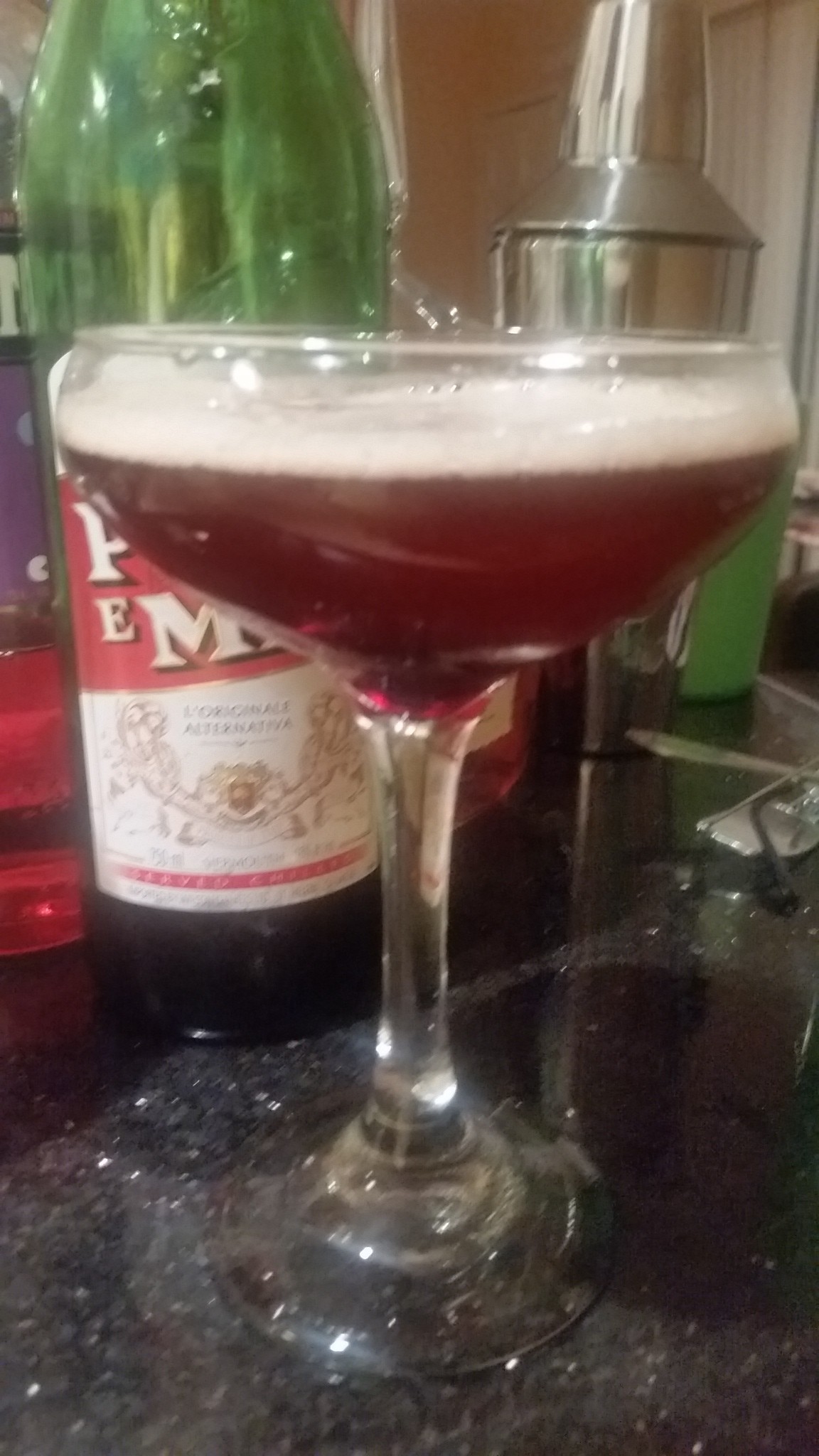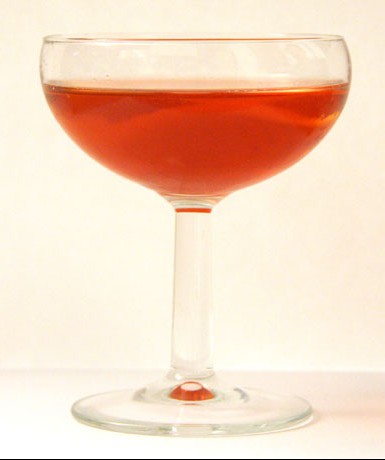Drink of the Week: The Boulevardier avec Punt e Mes
 The Boulevardier, which hails from Paris (where else?), has been featured here before, but it is less well known than its very close Italian relative, the Negroni. You won’t find it in as many of the classic cocktail books — it doesn’t appear in Dale DeGroff’s “The Craft of the Cocktail,” nor Robert Hess’s “The Essential Bartender’s Guide,” nor even Harry Craddock’s epochal 1930 tome, “The Savoy Cocktail Book,” but it certainly has its fans. Indeed a frequent drinking companion has long been championing the Boulevardier over the Negroni, I myself was inclined to give it a slightly lesser standing. That changed, however, with my current interest, as described in last week’s Negroni post, in substituting standard sweet vermouth with it’s Amaro-esque cousin, Punt e Mes in classic cocktails.
The Boulevardier, which hails from Paris (where else?), has been featured here before, but it is less well known than its very close Italian relative, the Negroni. You won’t find it in as many of the classic cocktail books — it doesn’t appear in Dale DeGroff’s “The Craft of the Cocktail,” nor Robert Hess’s “The Essential Bartender’s Guide,” nor even Harry Craddock’s epochal 1930 tome, “The Savoy Cocktail Book,” but it certainly has its fans. Indeed a frequent drinking companion has long been championing the Boulevardier over the Negroni, I myself was inclined to give it a slightly lesser standing. That changed, however, with my current interest, as described in last week’s Negroni post, in substituting standard sweet vermouth with it’s Amaro-esque cousin, Punt e Mes in classic cocktails.
What I found was that switching out the very bittersweet, borderline chocolatey flavor of Punt e Mes with the more straight up, sweet-winey flavor of regular red vermouth, produces a drink that — at least some of the time — can be almost celestial in its deliciousness and which, at worst, remains a reliably pleasing concoction. Let’s give it a whirl.
The Boulevardier avec Punt e Mes
1 1/2 ounces rye or bourbon whiskey
1 ounce Punt e Mes
1 ounce Campari
1 cocktail cherry or orange peel (desirable garnish)
Combine the liquid ingredients in a cocktail shaker or, if you’re so inclined, a mixing glass. Add plenty of ice, shake or, if you’re so inclined, stir. Strain into a chilled cocktail glass and add your garnish. As with the Negroni, you can strain this in a rocks glass with fresh ice, if you really want to, but I’m not particularly recommending it.
****
Most versions of the Boulevardier call for bourbon, but I’d steer clear of the sweeter expressions — my least favorite version of this included Maker’s Mark, which I’m ordinarily pretty fond of. Instead, using Bulleit Rye yielded a full-bodied blend of very sweet, very bitter, and just plain very good flavors. On the other hand, using a slightly less sweet bourbon like Michtner’s yielded a very nice result, so I’m not issuing any clear dogmas on the bourbon vs. rye question here. You can always split the difference and try this with a Canadian whiskey. Both Alberta Dark Rye and good ol’ Canadian Club were just dandy.
There are, of course, other variations. You can definitely play with your proportions if you like. The original Boulevardier called for equal proportions of all three ingredients and a lot of more recent versions are more whiskey-heavy. Try them all, I say. This drink can definitely withstand some experimentation.
Indeed, if there’s one thing I’ve learned in the cocktailing trenches, it’s that there’s no perfect drink, and something that might send your tastebuds into the ecstatic stratosphere one night, might merit a far less enthusiastic response the next — even when you’re using the same ingredients and following the same procedure. Still, combining Punt e Mes, Campari, and whiskey seems about as repeatable a formula for boozey success as you’re likely to find.
You can follow us on Twitter and Facebook for content updates. Also, sign up for our email list for weekly updates and check us out on Google+ as well.
Posted in: Food & Drink, Lifestyle, Vices
Tags: cocktails, Drink of the Week, Happy Hour, Punt e Mes, the Boulevardier, the Negroni

 Can a drink be like an old friend? Should a drink be like an old friend? It’s way too late as I’m writing this to even begin answering those questions, but I can tell you I much prefer the older version of this prohibition era
Can a drink be like an old friend? Should a drink be like an old friend? It’s way too late as I’m writing this to even begin answering those questions, but I can tell you I much prefer the older version of this prohibition era 








